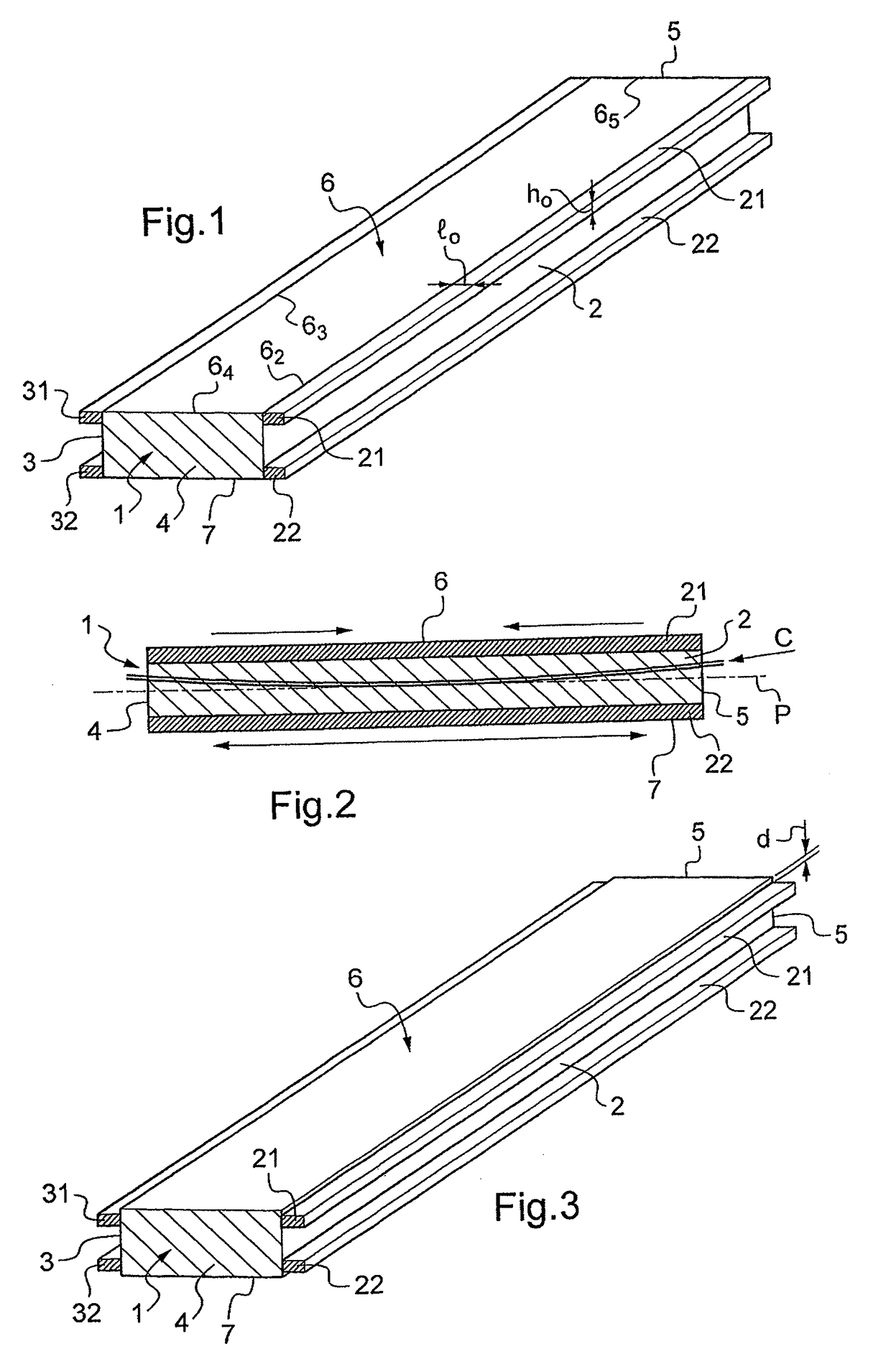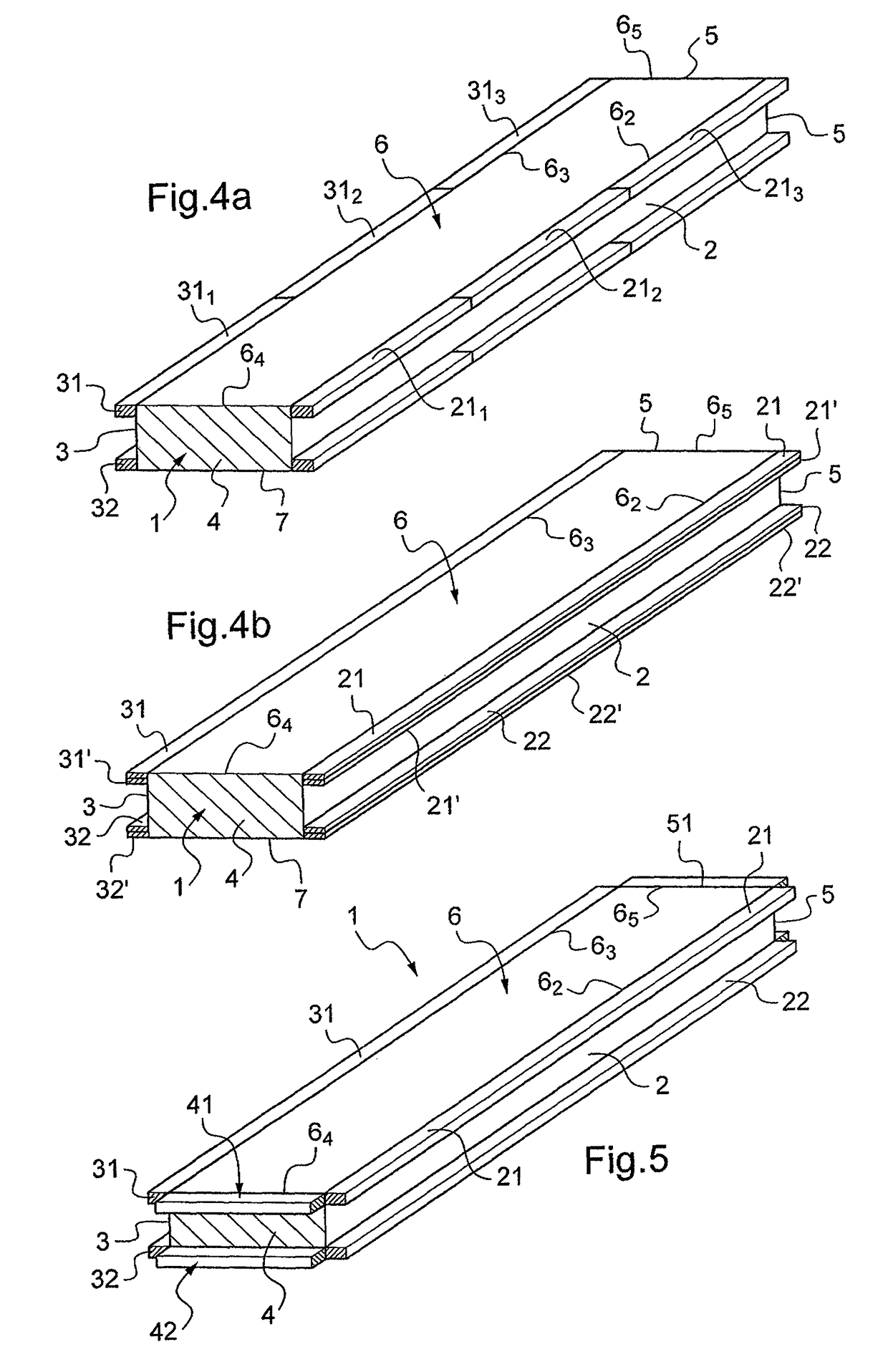Bimorph optical element
a technology of optical elements and optical elements, applied in the field of bimorph optical elements, can solve the problems of limited stability, difficult implementation of laminated structures, and limited quality of mirror polishing
- Summary
- Abstract
- Description
- Claims
- Application Information
AI Technical Summary
Benefits of technology
Problems solved by technology
Method used
Image
Examples
Embodiment Construction
[0046]FIG. 1 shows a deformable optical element 1 of rectangular shape that presents two main lateral faces 2 and 3 along the long side of the rectangle and two end lateral faces 4 and 5. The top face 6 presents an optical function, for example it is polished so as to form a mirror that is plane or curved (concave or convex) in the longitudinal direction and / or in the transverse direction, or else it carries one or more grating patterns with lines that are perpendicular to the long sides of the rectangle or parallel thereto, for example, so as to form a grating that is plane or curved (concave or convex) in the longitudinal direction and / or in the transverse direction and that operates in reflection or in diffraction.
[0047]The lateral face 2 carries a first pair of piezoelectric bars 21, 22 that are substantially parallel to the midplane P (drawn in chain-dotted lines in FIG. 2) of the optical element 1 and defining the neutral axis (when the planes 6 and 7 are plane or curved only ...
PUM
 Login to View More
Login to View More Abstract
Description
Claims
Application Information
 Login to View More
Login to View More - R&D
- Intellectual Property
- Life Sciences
- Materials
- Tech Scout
- Unparalleled Data Quality
- Higher Quality Content
- 60% Fewer Hallucinations
Browse by: Latest US Patents, China's latest patents, Technical Efficacy Thesaurus, Application Domain, Technology Topic, Popular Technical Reports.
© 2025 PatSnap. All rights reserved.Legal|Privacy policy|Modern Slavery Act Transparency Statement|Sitemap|About US| Contact US: help@patsnap.com



